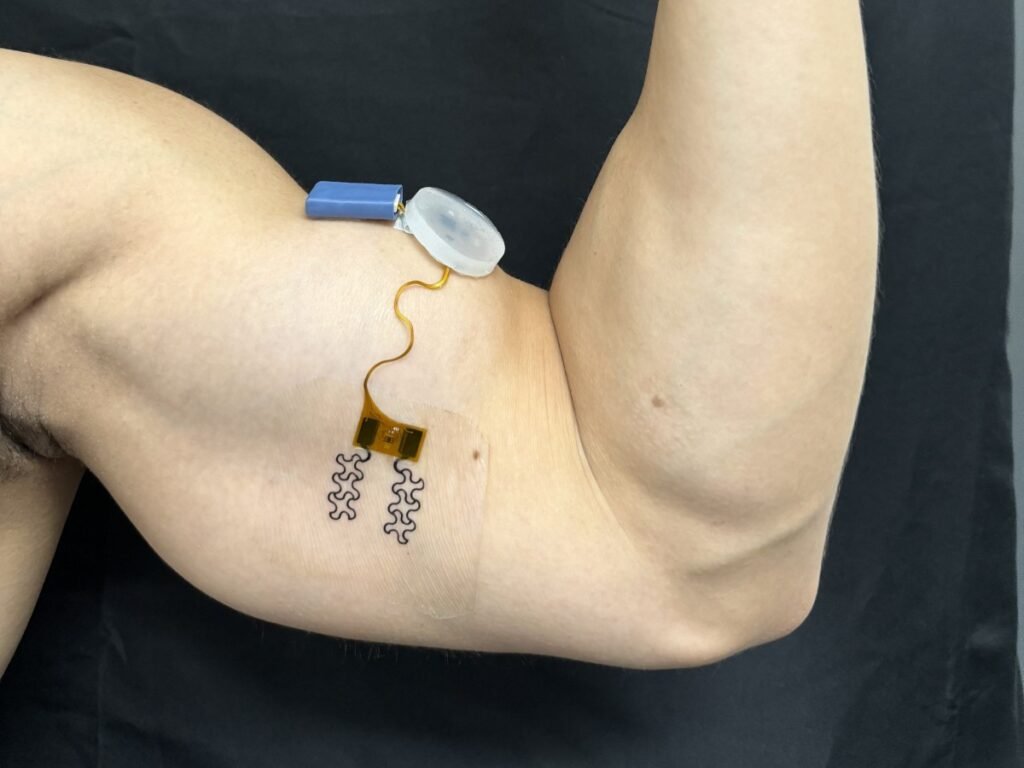Dehydration is a silent but serious health risk—especially in hot climates, high-performance environments, and among vulnerable populations like the elderly or those with chronic illnesses. Yet tracking hydration in real time has remained elusive. Traditional methods like urine tests, blood draws, or weight measurements are invasive, slow, and impractical for continuous monitoring. Now, researchers at the University of Texas at Austin have developed a wearable sensor that could change the game: a lightweight, noninvasive device that continuously monitors hydration levels using bioimpedance and wirelessly transmits data to a smartphone.
The sensor works by sending a small, safe electrical current through the arm via strategically placed electrodes. Because water conducts electricity well, hydrated tissues allow the current to pass easily, while dehydrated tissues resist it. This change in electrical resistance—known as bioimpedance—serves as a proxy for hydration status. The data is collected in real time and transmitted to a mobile device, allowing users to track their hydration throughout the day.
Led by Professor Nanshu Lu from UT Austin’s Cockrell School of Engineering, the team tested the device in both controlled and real-world settings. In one study, participants took diuretics to induce dehydration, and the sensor’s readings closely matched changes in body weight and urine output. In another 24-hour trial, the device tracked hydration during everyday activities like walking, working, and exercising. The results showed that arm bioimpedance is a reliable surrogate for whole-body hydration—even outside of clinical environments.
This breakthrough has wide-ranging implications. For athletes, firefighters, and outdoor workers, the sensor could help prevent heatstroke and performance decline by prompting timely rehydration. For patients with kidney disease, cardiovascular conditions, or chronic dehydration, it could support better disease management and early intervention. Even office workers or students could benefit from subtle reminders to drink water before fatigue or cognitive decline sets in.
Unlike commercial hydration monitors, which often rely on bulky equipment or stationary setups, UT Austin’s sensor is designed for comfort and mobility. Future versions may include breathable e-tattoos or sweat-wicking materials to improve wearability during extended use. The team also plans to expand testing to other body segments like the forearm or thigh and to establish baseline data for absolute hydration levels. This would allow the sensor to provide not just relative changes, but precise hydration metrics tailored to individual users.
Article from UT Austin: Stay Hydrated: New Sensor Knows When You Need a Drink
Abstract in PNAS: Wireless arm-worn bioimpedance sensor for continuous assessment of whole-body hydration

